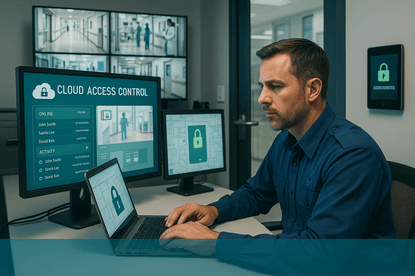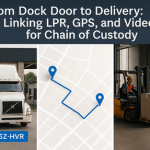
Healthcare facilities have always been complex environments to secure. Between 24/7 operations, rotating staff, visiting specialists, and constant patient traffic, managing access across multiple departments—or even multiple campuses—can be a major challenge.
For years, hospitals relied on traditional, on-premise access control systems: local servers, manual badge management, and physical keycard readers. But as healthcare security needs have evolved, so has the technology.
Enter cloud-based access control—a modern, flexible solution that’s transforming how hospitals manage safety, compliance, and efficiency across their facilities.
k
k
What Is Cloud Access Control?
In simple terms, cloud access control replaces traditional hardware-based systems with a secure, web-connected platform. Instead of relying on local servers or complex wiring, everything—user permissions, door schedules, and security logs—can be managed remotely through an online dashboard.
This means security administrators can:
-
Add or revoke access from anywhere
-
Monitor entry events in real time
-
Integrate access control with video surveillance and visitor management systems
-
Scale the system easily across multiple buildings or campuses
For hospitals, where staff turnover is high and operations run 24/7, the ability to manage access instantly from the cloud is a game-changer.
k
k
Why Healthcare Facilities Are Making the Switch
1. Centralized Control Across Multiple Sites
Large healthcare networks often have multiple facilities—hospitals, clinics, labs, and administrative offices. Cloud access control gives security teams a single, unified platform to manage credentials and permissions across all locations.
No more traveling between sites or managing disconnected systems. Everything can be viewed and controlled from one interface.
k
k
2. Faster Response and Real-Time Monitoring
Traditional access systems rely on local updates. If a nurse loses her badge, the change might not take effect until the next sync or system update. In a cloud-based system, the update is instant.
That means no delays, no security gaps, and no risk of unauthorized access.
Security personnel can also receive real-time alerts for unusual activity—like a door being forced open or an after-hours access attempt—allowing faster response when it matters most.
k
k
3. Easier Compliance and Reporting
Healthcare is one of the most heavily regulated industries. HIPAA, The Joint Commission, and state health agencies all require documentation of who accessed what, and when.
Cloud access control systems automatically log every entry, badge event, and user change, creating a clear audit trail that’s easy to export during compliance reviews. This not only simplifies reporting but also reduces administrative workload.
k
k
4. Seamless Integration with Other Systems
Modern cloud access control systems can integrate with:
-
Video surveillance platforms for visual verification of access events
-
Visitor management systems to track non-staff movement
-
Building management systems for smarter, energy-efficient operations
These integrations create a connected ecosystem that strengthens both security and operational efficiency.
k
k
5. Scalability and Cost Savings
Cloud solutions eliminate the need for expensive on-site servers, local software licenses, and constant maintenance. As your facility grows, new doors or buildings can be added quickly without heavy IT involvement.
And since updates are handled automatically by the provider, you’re always running the latest, most secure version—without downtime or surprise costs.
k
k
Addressing the Common Concerns
Of course, not every security leader feels ready to move to the cloud—and that’s understandable. Here are a few common concerns, and what’s true today:
-
“Is it secure enough?”
Yes. Reputable cloud providers use end-to-end encryption, multifactor authentication, and redundant data centers to ensure uptime and protection. -
“What if we lose internet access?”
Most cloud systems offer offline functionality, so doors continue operating based on the last known permissions until connectivity is restored. -
“Will it integrate with what we already have?”
Cloud platforms are built with open APIs, allowing easy integration with existing access control hardware and hospital IT systems.
k
k
Real-World Example: A Smarter Hospital Network
A regional healthcare network in the Southeast recently transitioned to cloud-based access control across six facilities. Before, each hospital managed access separately. Badge deactivation could take hours, and compliance reporting took days.
After migrating to a unified cloud system, the network:
-
Centralized access management for all 6 campuses
-
Reduced badge management time by 70%
-
Improved audit readiness with instant, automated logs
-
Linked access control to existing video surveillance for faster investigations
Security became more proactive—and compliance, effortless.
k
k
The Future of Access Control in Healthcare
As hospitals continue to modernize, cloud-based access control isn’t just a trend—it’s becoming the new standard. The flexibility, visibility, and cost efficiency it offers make it an essential tool for securing complex, 24/7 environments.
More importantly, it allows healthcare leaders to shift from reactive to proactive security—identifying risks before they become incidents.
Talk to SSP about implementing a cloud-based access control solution that protects your facility, simplifies management, and keeps your staff focused on what matters most: patient care.


